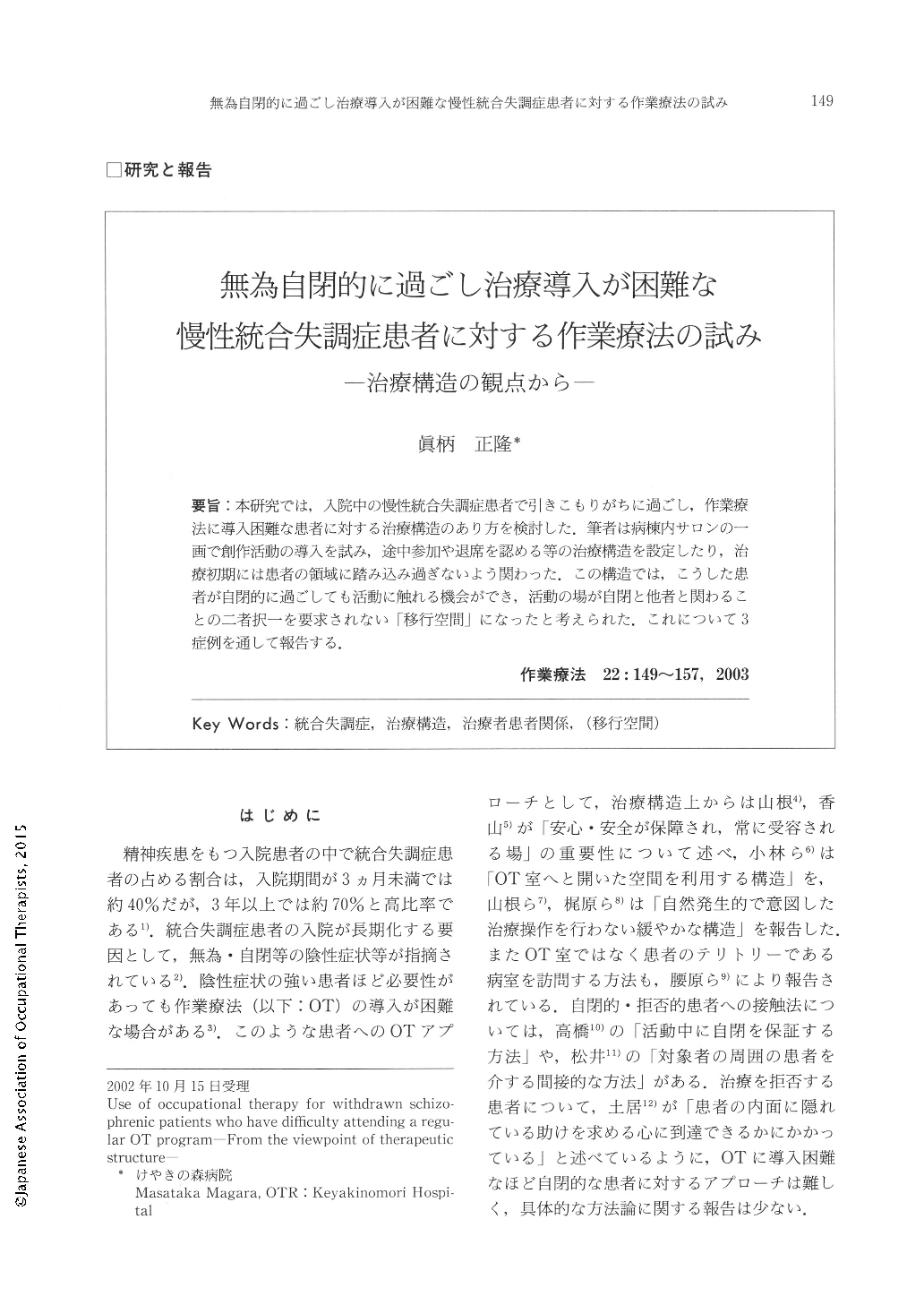Japanese
English
- 販売していません
- Abstract 文献概要
- 1ページ目 Look Inside
- 参考文献 Reference
要旨:本研究では,入院中の慢性統合失調症患者で引きこもりがちに過ごし,作業療法に導入困難な患者に対する治療構造のあり方を検討した.筆者は病棟内サロンの一画で創作活動の導入を試み,途中参加や退席を認める等の治療構造を設定したり,治療初期には患者の領域に踏み込み過ぎないよう関わった.この構造では,こうした患者が自閉的に過ごしても活動に触れる機会ができ,活動の場が自閉と他者と関わることの二者択一を要求されない「移行空間」になったと考えられた.これについて3症例を通して報告する.
The purpose of this study is to discuss the therapeutic structure of inpatient occupational therapy (OT) especially for the withdrawn and chronic shizophrenic patients who have difficulty attending the regular OT programs. The author provided the craft program in the ward. In this program, the patients admitted that they participated in the program after it started and they left the seat before it finished. In the early stage of this therapy, occupational therapists avoided proximity with them in order to keep patients' sense of security. This therapeutic structure enabled patients to have better contact with the program, even if they spent their time withdrawing into themselves. The craft program place became a "potential space" where patients didn't need to choose between withdrawal and contact with others. The therapeutic aspects were also discussed through works made by three patients.

Copyright © 2003, Japanese Association of Occupational Therapists. All rights reserved.


